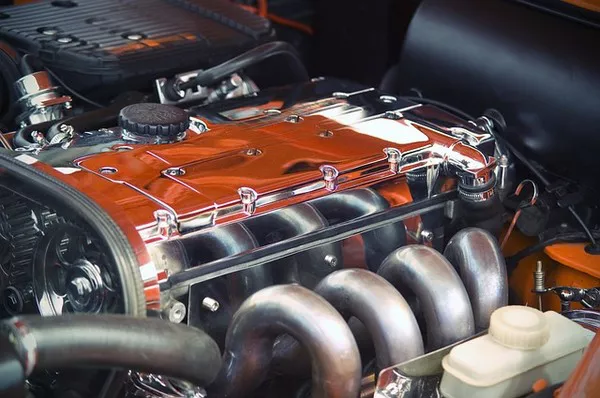The refrigeration cycle is a fundamental process that underpins the functionality of countless systems we rely on daily, from air conditioners to refrigerators. At the heart of this cycle lies the refrigerant compressor, a crucial component responsible for the circulation of the refrigerant and the transformation of low-pressure, low-temperature vapor into high-pressure, high-temperature gas. In this article, we will delve into the intricate workings of a refrigerant compressor, shedding light on its operation and significance in various applications.
Introduction to Refrigeration Cycle
Before delving into the mechanics of a refrigerant compressor, it is imperative to understand the basic principles of the refrigeration cycle. The cycle revolves around the manipulation of a refrigerant – a substance that changes its state from liquid to vapor and back again at different temperatures and pressures. This phase change allows the refrigerant to absorb heat from one location and release it in another, thereby achieving the desired cooling effect.
The refrigeration cycle comprises four main stages: compression, condensation, expansion, and evaporation. Among these, the compression stage is orchestrated by the refrigerant compressor and serves as the foundation for the entire cycle.
The Function of a Refrigerant Compressor
A refrigerant compressor is a mechanical device responsible for pressurizing the low-pressure vaporized refrigerant, effectively increasing its temperature and pressure. This high-energy, high-temperature gas is then directed to the condenser, where it releases heat and transitions back into a liquid state. The compressor plays a pivotal role in maintaining the flow of refrigerant throughout the cycle, facilitating the transfer of heat from one location to another.
Types of Refrigerant Compressors
There are several types of refrigerant compressors, each designed to cater to specific applications and efficiency requirements. The most common types include reciprocating compressors, rotary compressors, screw compressors, and centrifugal compressors.
Reciprocating Compressors: These compressors operate using a piston-cylinder arrangement. The piston moves back and forth within the cylinder, creating changes in volume and pressure that allow the refrigerant to be compressed.
Rotary Compressors: Rotary compressors consist of a rotating element that compresses the refrigerant against a stationary casing. This type is known for its smooth operation and relatively low noise levels.
Screw Compressors: Screw compressors employ two intermeshing rotors to compress the refrigerant. These rotors have helical lobes that reduce the volume as they rotate, leading to compression.
Centrifugal Compressors: Centrifugal compressors are commonly used in large-scale applications. They utilize centrifugal force to accelerate the refrigerant and convert kinetic energy into pressure.
Working Principle of a Refrigerant Compressor
The fundamental working principle of a refrigerant compressor revolves around the compression of vaporized refrigerant. Let’s take a closer look at the steps involved:
Vapor Suction: At the beginning of the cycle, low-pressure vaporized refrigerant is drawn into the compressor’s suction line. This vapor is at a low temperature and pressure, having absorbed heat in previous stages of the cycle.
Compression: Once inside the compressor, the vaporized refrigerant encounters the piston, rotating element, or other compression mechanism, depending on the compressor type. As the compressor’s mechanism moves, it reduces the volume of the vapor, leading to an increase in pressure.
Temperature Rise: The compression process not only elevates the pressure but also causes a substantial temperature increase in the refrigerant. This high-energy, high-temperature vapor is now ready to proceed to the condensation stage.
Discharge: The pressurized refrigerant exits the compressor through the discharge line, ready to release its acquired heat in the condenser. It’s important to note that the efficiency of the compressor significantly affects the overall efficiency of the refrigeration cycle.
Significance in Refrigeration and Air Conditioning
The role of the refrigerant compressor in refrigeration and air conditioning systems cannot be overstated. Its operation is essential for maintaining the desired temperature within controlled environments, whether it’s a household refrigerator, a commercial cooling system, or an industrial air conditioner.
Efficiency is a critical consideration in the design and utilization of refrigerant compressors. Energy consumption is directly linked to the compression process, and advancements in compressor technology have led to the development of more efficient and environmentally friendly systems.
Energy Efficiency and Environmental Impact
Given the increasing concern over energy consumption and environmental impact, the design and operation of refrigerant compressors have evolved to address these challenges. Modern compressors incorporate advanced technologies such as variable-speed drives, which allow the compressor to adjust its speed and capacity based on the cooling load. This results in reduced energy consumption during periods of lower demand.
Furthermore, the choice of refrigerants has also garnered significant attention due to their varying environmental impacts. Traditional refrigerants, such as hydrochlorofluorocarbons (HCFCs) and hydrofluorocarbons (HFCs), have been phased out or are being phased out due to their contribution to global warming and ozone depletion. The development of environmentally friendly refrigerants, such as hydrofluoroolefins (HFOs) and natural refrigerants like ammonia and carbon dioxide, has prompted the need for compressor designs that are compatible with these alternatives.
Conclusion
In the realm of refrigeration and air conditioning, the refrigerant compressor stands as a pivotal component in the intricate machinery of the refrigeration cycle. Its role in elevating the pressure and temperature of vaporized refrigerant is instrumental in facilitating the transfer of heat and achieving the desired cooling effect. With advancements in compressor technology and a growing emphasis on energy efficiency and environmental sustainability, the continued evolution of refrigerant compressors promises more efficient and eco-friendly cooling solutions for the future.

